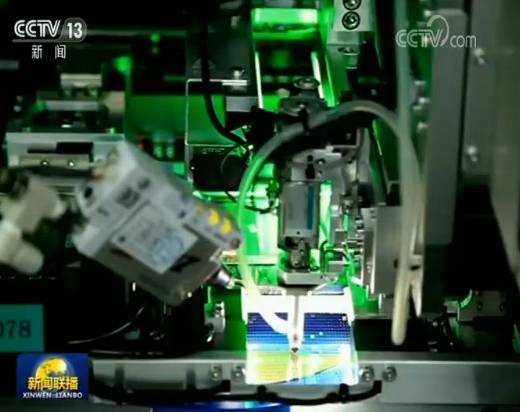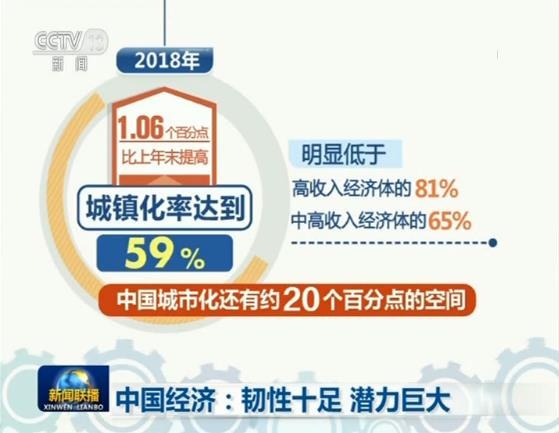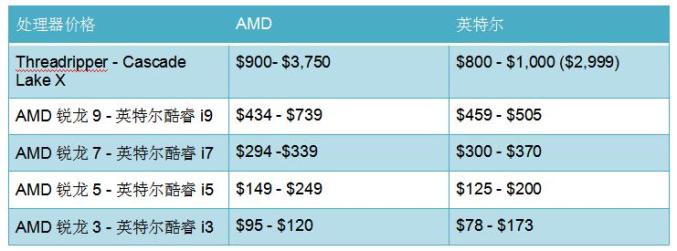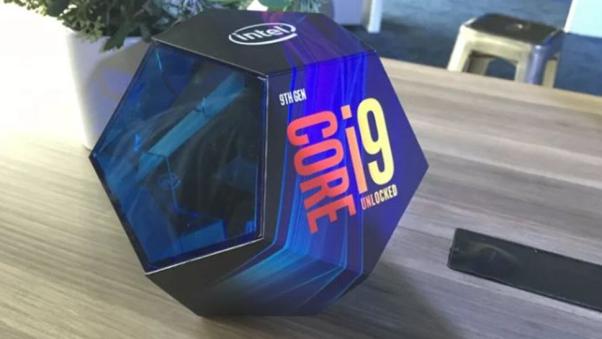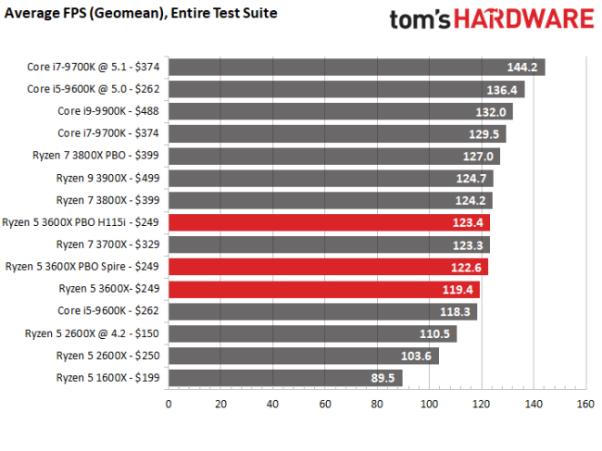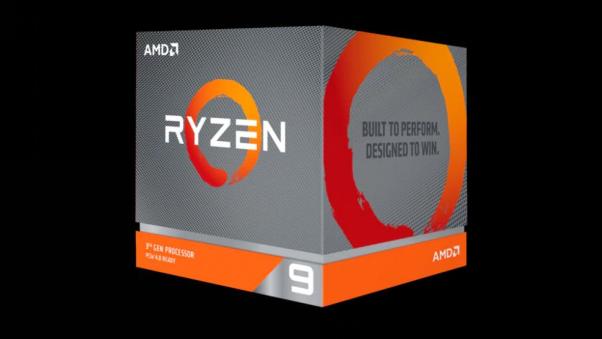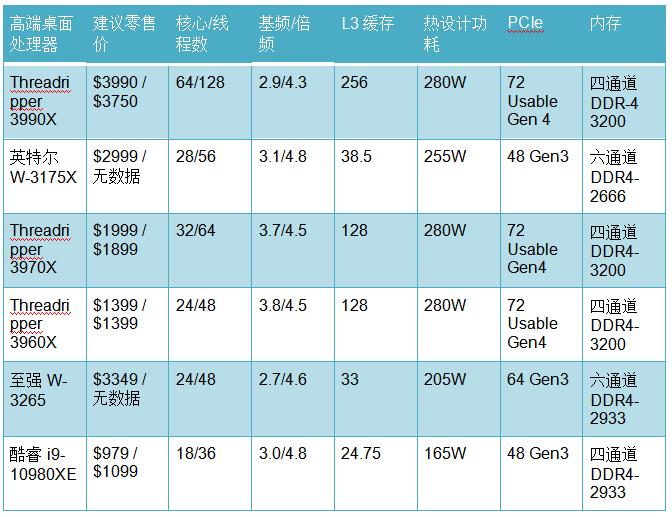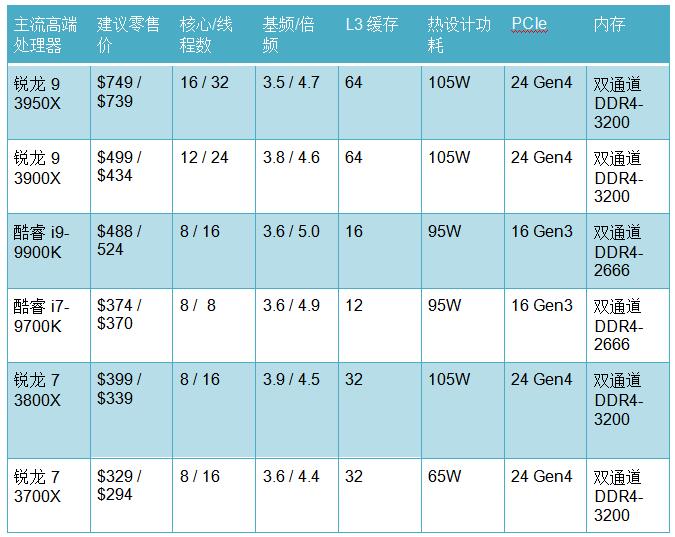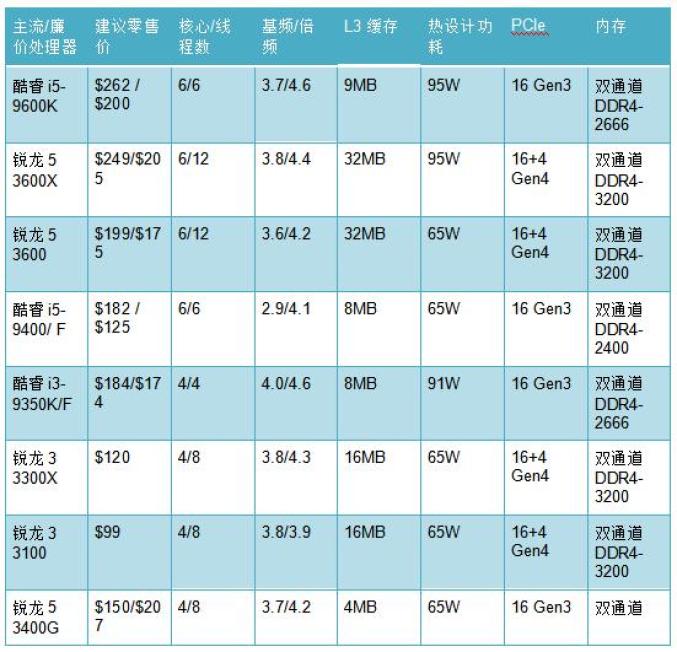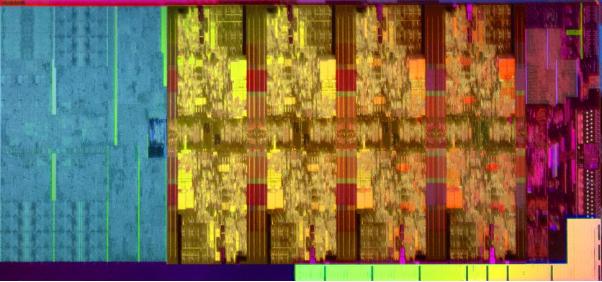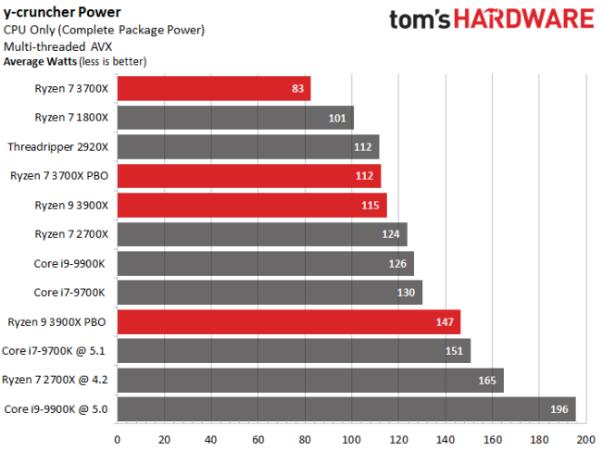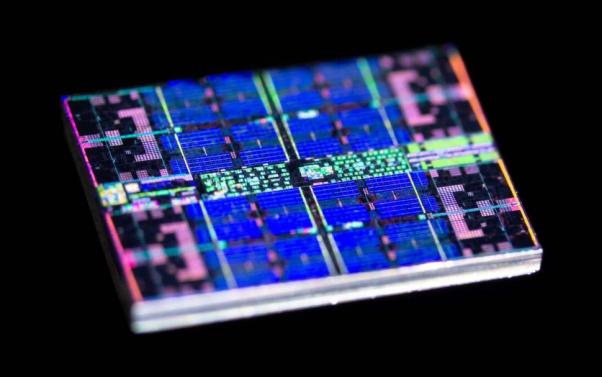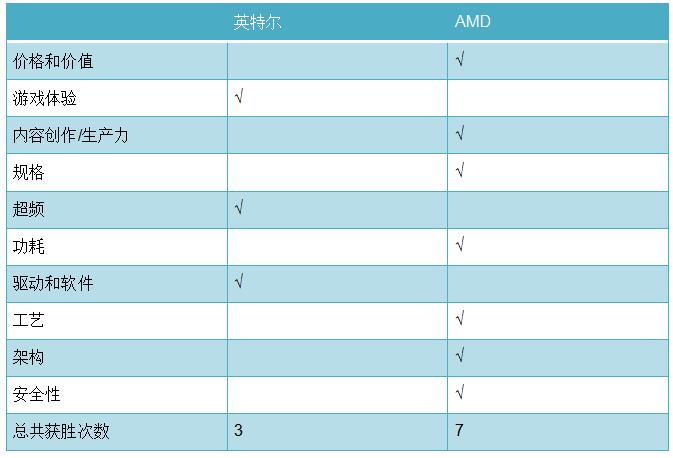Download from vision china.
Produced by | csdn (ID: csdnnews)
The following is the translation:
Whether we choose CPU for games or CPU for desktop applications, we have only two choices: AMD or Intel. Both companies have their own fans, so it is difficult for people who want to buy CPU to get pertinent advice, but in fact, the answer is obvious in many cases. In fact, for most people, AMD clearly wins. This conclusion is a big reversal, because AMD almost went bankrupt three years ago, but now it can compete with Intel in the chip market that has dominated for more than ten years.
This article discusses the endless debate between AMD and Intel’s desktop CPU from the aspects of personal computer’s purpose, price, performance, driver support, energy consumption and security (we don’t discuss notebook or server chips here), as well as the current situation of their competition. We will also discuss the process and architecture that changed the rules of the game. There is no doubt about the overall winner, but which CPU to choose should be comprehensively considered according to price, performance and the most important function.
1. price and value comparison between 1.AMD and Intel CPU.
No matter who it is, price is always the most important consideration, and in terms of value, AMD is hard to beat. AMD’s products have many additional advantages, such as integrated cooling, all models fully support overclocking, not to mention various software, such as the automatic overclocking function of Precision Boost Overdrive.
The extensive forward and backward compatibility of Socket AM4 motherboard also brings great benefits, and every penny you spend on the processor and motherboard is worth it. AMD also allows all motherboards except A series to overclock, which is also good news for users.
In addition, in the CPU war between AMD and Intel, we haven’t even discussed the new Pinan itself. We will see later that AMD’s modern processors tend to provide more cores, or more threads, and faster PCIe 4.0 at any price.
Although the price of Intel’s high-end desktop models is somewhat loose, the price of Intel chips is high. Intel’s models that don’t support overclocking have their own radiators (you need to spend more money to support overclocking), but the quality of these models can only be said to be acceptable. We have seen that Intel’s own radiator does not provide the best performance under factory settings. Obviously, this can’t be compared with AMD, and some models of AMD even support RGB radiators.
Intel’s expensive, overclocking K-series processors don’t even have a heat sink. So if you want to start with an Intel processor that can overclock, you must set aside a budget for the radiator. In contrast, most of AMD’s own radiators can be used for moderate overclocking. But if you want to buy Intel chips, then Core i5-9400F is worth considering. The processor doesn’t have an integrated graphics card, and it doesn’t support overclocking, but as an Intel Core i5, the price of $125 is very good.
Not only is the K-series that Intel can overclock expensive, but you also need to buy an expensive Z-series motherboard to release the full performance of CPU, because B-series or H-series motherboards are not allowed to overclock. Intel is also famous for changing the socket interface frequently, which means that it is unlikely to use a new processor on the old motherboard or install the old processor on the new motherboard. Therefore, when choosing Intel, we should seriously consider the issue of forward and backward compatibility. And you can’t use PCIe 4.0. Intel still uses PICe 3.0 bus, and its transmission rate is only half of AMD’s PCIe 4.0.
Although AMD has the highest performance-to-price ratio, the products with the highest performance at each price point have to pay an extra price, especially the Ruilong 9 3950X. Intel’s processors are far ahead of AMD in terms of performance. Although AMD will charge extra fees, the performance dispute has obviously ended.
Results: AMD won. When comparing the CPU of AMD and Intel, we need to consider the complete product line, especially when calculating the performance that each dollar can buy. However, if you want to buy an integrated graphics card, you can only choose Intel. We recommend Intel to most users who want to choose integrated graphics cards, especially when you want to play games.
2. Comparison of game performance between 2.AMD and Intel CPU.
In the CPU battle between AMD and Intel, Intel’s performance on each core still wins, which means that for lightweight threads and those applications that can’t make good use of multi-core and multi-threading, Intel’s performance is quite excellent. This is the case with most games. However, AMD is ahead in some key price bands, especially in end products, and our evaluation shows that AMD’s game performance is not inferior. Therefore, we have many choices at different price points.
Intel’s most expensive desktop processor, Core i9-9900K, can provide the best high-end game performance, while the mid-range product Core i9-9700K is not far behind. However, the difference in product performance between Intel and AMD’s corresponding price bands can’t make up for the extra expenses brought by choosing Intel, at least for most people.
The difference between AMD and Intel’s top products in game performance is almost hard to find, but the situation in mid-range products is more complicated. Referring to the previous classification, price is the ultimate measure, while AMD’s mid-range products win in several key aspects, and most consumers will buy it. On the contrary, Intel’s advantages are not so obvious.
To give full play to Intel’s advantages, you need a high-end CPU and a monitor with high refresh rate, and you also need to set the game to the outdated resolution of 1080p. If you choose 1440p or even higher resolution, you will hit the bottleneck of GPU, so the CPU can’t play its best performance. However, some extra CPU processing power can give you some room to upgrade your graphics card-AMD’s Big Navi and Nvidia’s GTX 3080/Ampere have been planned to be released this year.
We believe that most mid-range machines will use weak GPU, and its performance usually matches that of CPU. It is worth mentioning that AMD provides more cores and threads than Intel at all price points, so running chat applications, browsers and other tasks in the background when playing games will not have much impact on performance. If you want to play live games, AMD’s good ratio of core number to thread number makes it the best choice.
Whenever your CPU is fast enough, you should choose the best GPU in your budget, because CPU usually becomes a bottleneck. Therefore, you should always pay attention to our articles on the best game CPU and the best graphics card, as well as the comparison chart between CPU and GPU to ensure the best match between them.
Result: Intel won, but only because we measured the top performance. If you can squeeze out the performance of each frame, especially under overclocking conditions, then you should choose high-end Intel, whose top performance can also ensure that you will not be outdated when upgrading the GPU later. Just pay attention to the priority of selection.
In the mid-range products, AMD is usually a better choice, and unless you choose the fastest GPU with a display with low resolution and high refresh rate, the gap with Intel CPU will not be too big.
3. Performance of 3.AMD and Intel in terms of productivity and content creation
The performance battle outside the game is clearer. In terms of productivity and content creation, AMD chips win completely. AMD chips are equipped with extra cores, threads and caches, so measured by the performance that each dollar can buy, AMD wins.
Intel has fallen behind in the race to integrate more processor cores, and now AMD’s products in high-end desktop processing and mainstream desktop processors are far behind Intel. Think about it. AMD’s mainstream desktop processor, the 16-core Ruilong 9 3950X, provides twice as many cores and threads as Intel’s most powerful Core i9-9900K. At the same time, the number of cores of AMD’s high-end processor Ruilong Threadripper 3990X has reached 64 cores and 128 threads, which is 3.5 times that of Intel’s high-end model halo.
Whether it is a mainstream desktop processor or a high-end processor, AMD’s chips are much higher than Intel’s performance, so they are more expensive than the corresponding flagship products of Intel. However, you don’t need to spend too much money to enjoy the benefits of AMD chips. In almost every price range, AMD provides a higher number of cores and threads at a lower price. These extra cores make AMD win in almost all multi-threaded evaluations, such as image rendering and video processing.
Results: AMD won. The battle between AMD and Intel is almost one-sided for content creation and productivity applications that pursue performance. At present, AMD’s 6-core and more core products will not come with integrated graphics cards, which means that if you don’t want to buy a discrete graphics card, you can only choose Intel. But almost all professionals will choose discrete graphics cards.
4. Compare AMD and Intel processors in terms of specifications and features.
AMD has Ruilong 3, Ruilong 5, Ruilong 7, Ruilong 9 and Threadriper product lines, while Intel’s product lines are Core i3, Core i5, Core i7, Core i9 and Cascade Lake-X. The following table lists all products, comparing AMD and Intel processors in terms of specifications and performance, but for the sake of simplicity, we only focus on the top products on the corresponding product lines. Note that the two companies have cheap products in each product line, but from this table we can roughly feel the contrast between them. In terms of price, the suggested retail price and market price of the two companies are adopted.
Comparison of specifications and prices between AMD and Intel’s high-end desktop processors
The multi-core of high-end desktop processor can meet all the needs of content creators. Intel had no competitors in this field until AMD’s first-generation Threadripper product line broke this myth, and Threadripper 3000 product line completely defeated Intel.
We can see that in the comparison between AMD and Intel’s high-end desktop processors, the 64-core and 128-thread of AMD’s flagship product Threadripper 3990X are unmatched, while the 32-core and 24-core Threadripper 3970X and 3960X models are far ahead of Intel’s chips.
Intel’s high-end product line is divided into two series, among which Xeon W-3175X and W-3265 are suitable for luxurious and expensive LGA3647 motherboards. But this is not the most suitable system for computer enthusiasts, and its main market is professional workstations.
Intel’s high-end desktop products start with the 18-core Cascade Lake-X Core i9-10980XE, which uses the LGA2066 motherboard. Considering the price of the chip, its performance is very strong, but the number of cores of Threadripper is 3.5 times hard to beat, so basically Intel lost to AMD in the high-end desktop market.
With AMD’s Threadripper product line, you can get more cores, caches and faster PCIe 4.0, but you have to spend more money to support such a powerful processor. However, when considering the price per core, AMD is more cost-effective.
AMD and Intel’s high-end product specifications and prices
In the battle of high-end processors, AMD’s Ruilong 9 and Ruilong 7 families completely defeated Intel’s Core i9 and Core i7 product lines. Similarly, AMD’s 16-core 32-thread Ruilong 9 3950X has maintained its absolute leading edge, setting a new benchmark in terms of core count, performance and price.
Intel’s 8-core and 16-thread Core i9-9900K can’t match it, but from the price point of view, it can actually compete with AMD’s Ruilong 9 3900X. We see that in each price segment, AMD’s core number and price per core are dominant, and there are more caches, faster PCIe 4.0 and faster memory support. 9900K does lead in game performance, but it stops there. The performance of the 3900X is very close, and most players will not notice the difference between it and Intel, although there may be differences after upgrading the GPU.
So are the more mainstream Ruilong 7 and Core i7 markets. To be honest, these chips are what most gamers should buy. Here, AMD’s Ruilong 7 3700X can easily beat Intel’s Core i7-9700K, which has eight more threads and is more suitable for handling multiple tasks. Similarly, 9700K is still the king of the game world, but the Ruilong 7 family wins in the rest of the place.
Specifications and prices of mid-range and cheap processors from AMD and Intel
Regarding the midrange and cheap CPU of AMD and Intel, the Core i5 and i3 families are evenly matched with AMD’s Ruilong 5 and Ruilong 3 processors. This market constitutes the most important sales of AMD and Intel, so the price and value of these products are the most important.
AMD’s Ruilong 5 3600X has the same number of cores as Intel, but the number of threads is more than that of Core i5-9600K to balance the advantages of the latter in fundamental frequency and frequency doubling, so 3600X is the best cost-effective combination in mid-range products. You can even downgrade to the Ruilong 5 3600, and use AMD’s Precision Boost Overdrive to overclock with one button to get almost the same performance as 3600X. Tip: AMD models without X are the best cost performance.
AMD’s new products-the Ruilong 3 3300X without graphics card for only $120 and the Ruilong 3 3100 model for only $99 are also designed to resist Intel. Three years ago, Intel’s flagship chip cost about $350, with four cores and eight threads, but now AMD’s Ruilong 3 product line can provide the same number of cores and threads, but it only costs $99. These products have boosted the sales of each product line of AMD and dealt a fatal blow to the second-hand price of Intel’s old chips. AMD also announced the news of the upcoming B550 motherboard, bringing PCIe 4.0 products with higher cost performance into the low-end market.
AMD also focuses on the Ruilong 5 3400G and Ruilong 3 3200G APU to resist Intel’s Core i5-9400F, Core i3-9350K/F and Core i3-9100F models. AMD’s model integrates Vega’s graphics card unit and can run many low-end games. This is why the i5-9400F and i3-9100F are so popular, because consumers no longer need to spend $50 on a decent discrete graphics card. The new Ruilong 3 3300X and 3100 are not on the market yet, but we are eager to see how it will affect the market.
Both high-end desktop chips do not provide integrated graphics units. However, even if Intel sells its F-series chips without graphics cards at a discount, in the mainstream product line, Intel still has an advantage because of its own integrated graphics card.
On the contrary, AMD only provides integrated graphics cards on APU models, which means that any processor with more than four cores (or a processor with a price of more than $150) must be equipped with a discrete graphics card. This is a big disadvantage, because most mainstream users can’t play games with computers, so they have lost a large part of the professional market and OEM market. Intel’s iGPU is almost useless in games, but it is very suitable for display and QuickSync applications, while AMD’s iGPU provides the best gaming experience. However, the choice of AMD products is very limited, so a large part of the market is lost.
Results: AMD won. Comparing the specifications of AMD and Intel CPU, you will find that AMD provides more cores and threads, more cache, faster memory support, and PCIe 4.0 only for mid-range products and high-end products in each price segment. From the high-end desktop market to the high-end, mid-range and low-end markets, AMD’s Ryzen processor Ti provides more value than Intel’s processors.
5. overclocking comparison between 5.AMD and Intel CPU
There is no suspense in the comparison of overclocking. Intel provides the most overclocking space, which means that Intel chips can get higher performance with the same level of processors.
But as I said before, you have to spend extra money to buy an expensive Z-series motherboard to overclock, and you also need to buy a suitable third-party radiator (preferably water-cooled) to get the best performance of Intel. However, once equipped with all this, Intel’s chips can be easily pushed to the limit, and it can get the main frequency of more than 5GHz in the ninth-generation Coffee Lake Refresh processor.
AMD’s manual overclocking space is not so big. In fact, all cores can only overclock about several hundred MHz at most, even lower than single-core chips. This means that overclocking all cores may even lead to performance degradation of programs that do not use threads, although the decline is very small.
However, AMD provides the function of Precision Boost Overdrive, which can overclock with one button and squeeze out some extra performance from the basic performance of the chip, the power supply system of the motherboard and the cooling system of the CPU. AMD’s approach can achieve the best performance and will not encounter any difficulties. In either case, you can’t achieve the high frequency as Intel processors (AMD chips without liquid nitrogen cooling can reach 5.0GHz), but this performance improvement is free.
Result: Intel won. In discussing the overclocking problem between AMD and Intel, Intel provides more overclocking space and can achieve higher main frequency. Just need to pay an extra price. AMD’s method is more suitable for entry-level users, and it can achieve basic overclocking without much trouble, but the performance will not be improved too much.
6. Power consumption comparison between 6.AMD and Intel
Comparing the power consumption and heat dissipation of AMD and Intel, we will find that AMD’s 7 nm has brought great differences. Power consumption is a by-product of design, such as the architecture introduced below. However, high power consumption usually means high heat, so a better radiator is needed to balance the high heat generated by the chip.
Since the launch of the 14-nanometer process five years ago, Intel has been continuously improving the process, increasing the power consumption/performance ratio by 70%. However, it is no accident that Intel’s latest chip consumes more power and generates more heat. This is because each generation of Intel chips needs to increase power consumption to provide higher performance, so as to resist AMD’s attack. This will lead to some problems with its own radiator, and also require the motherboard to provide more powerful power. When the two are combined, Intel becomes a big power consumer.
On the contrary, AMD relies on TSMC’s 7 nm junction, which is more effective than Intel’s 14 nm process. AMD’s Ruilong 3000 series processors have lost some advantages because the package contains a central 14-nanometer I/O die, but overall, AMD’s 7-nanometer chip has lower power consumption or better performance-to-power ratio. Therefore, AMD can accomplish more work with the same power consumption, which is a win-win result for users. Moreover, AMD’s requirements for heat dissipation are not high.
Results: AMD won. Evaluating AMD and Intel by performance per watt will inevitably mention the role of denser processing nodes and more efficient micro-architecture, and TSMC’s 7 nm process and AMD’s Zen 2 are the strongest combination. The latest Ruilong chips consume less power and therefore generate less heat. This makes it very easy to dissipate heat.
7. CPU drivers and software of 7.AMD and Intel
In terms of software support, Intel has always had a good reputation. AMD’s CPU chip driver and graphics card driver often have problems, which is also one of the consequences of AMD’s shortage of manpower. Intel has not failed in drivers, but its reputation for stability has helped Intel win the processor market, especially the OEM market.
As for the existing products, the quality of Intel’s graphics card drivers is very good recently, because Intel has brought its Xe graphics card to the market. Providing graphics card drivers on the day of sale has become the default behavior of chip manufacturers, and the integrated graphics card in Intel chips has become the largest integrated graphics card in the world, running on billions of computers.
However, you should be cautious when chasing higher-end Intel products. In the past, Intel developed many creative new products, but all of them were thrown into the garbage dump of history because of price and market forces, and the long-term support of these products was not so perfect.
AMD’s products are still defective. AMD’s BIOS release often leads to some problems, which make the chip unable to play its full performance, although these problems can be solved after a series of updates. AMD is a small factory, which leads it to face the challenge of continuous optimization based on Intel architecture in the whole industry.
The survival of the semiconductor industry is very difficult, especially in the face of powerful competitors, and redefining the industry means breaking old things. As far as AMD is concerned, the old thing to be broken is that the operating system and applications are not optimized in a way that can give full play to the best performance of the first generation Zen architecture processor, let alone Zen 2 with a large number of cores.
Result: Intel won. Over the years, Intel has solved the driver update problem of its integrated graphics card, and the company also has a large group of software developers on standby to provide technical support for the latest software. Ten years of rule has also taught most software developers how to optimize Intel architecture. AMD has made great progress in changing the developer ecosystem and providing optimization for its Zen architecture, but there is still much room for improvement if it wants to keep moving forward.
8. Process comparison between 8.AMD and Intel
There are several main underlying technologies that can affect the potential of the chip. The most basic rule of processors is still valid: the densest processor nodes can win as long as they have enough power, performance and area characteristics (PPA) and a solid micro-architecture. If we use this standard to measure the CPU of AMD and Intel, we will find that AMD usually leads in process and architecture.
But whether AMD really takes the lead in the processor market is still a controversial topic. Unlike Intel, AMD does not produce its own processors. Instead, it is only responsible for designing the processor and then handing it over to an external foundry for the actual chip production. For example, AMD’s latest Ryzen processor uses the 12-nanometer process of GlobalFoundries and the 7-nanometer process of TSMC, and the latter is the most important.
Many companies use TSMC’s 7-nanometer node, including Apple and Huawei, so 7-nanometer technology has won the financial and engineering support of the whole industry. Therefore, by Intel’s own admission, the 7-nanometer process is more advanced than Intel’s own 10-nanometer and 14-nanometer processes. According to Intel, its own process can no longer gain the leading position before 2021, and Intel can’t regain the leading position in the industry before the 5-nanometer technology that I don’t know when it will be released appears.
TSMC’s 7 nm node means that AMD can build cheaper, faster and denser chips and integrate more cores, while still keeping power consumption within a specific range. This design can be more convenient.
Our article will not focus on Intel’s 10 nm technology. Intel’s desktop chips have been using 14 nm technology for five years, and it will not change in the foreseeable future, while its 10 nm technology is mediocre in notebooks. (Intel has not released a 10-nanometer chip with more than four cores. )
AMD will contract with TSMC to acquire higher-end technology regardless of whether it can take the lead from Intel by using the 7-nanometer node. This advantage gives AMD the most powerful blank paper for it to paint a picture of its micro-architecture and create a chip that Intel can’t beat.
The only thing AMD needs to worry about is the production capacity: Although AMD can produce the 7-nanometer process, TSMC cannot provide enough products to resist Intel’s powerful production capacity, at least in a short time. Therefore, AMD faces the problem of product shortage, so its penetration in the market may be limited. But maybe don’t worry too much, because Intel’s own products have been in short supply for a year. Especially after AMD’s new design forced Intel to increase the number of cores, Intel’s production capacity further declined, and the jump ticket of 10 nm technology led to problems in Intel’s production capacity.
Results: AMD (TSMC) won. Intel has been using 14nm technology on desktop processors for five years in a row. Intel has squeezed a lot of performance from the ancient design and designed a series of optimization measures. But all this can’t help Intel win the process war with AMD. Intel needs to come up with 10 nm or 7 nm desktop chips as soon as possible.
9. Architecture of 9.AMD and Intel
When comparing the CPU of AMD and Intel, we must consider two designs that have great influence on performance, scalability and performance per unit price: interconnection and micro-architecture.
AMD’s Infinity Fabric can combine multiple dies into one processor. It can be considered that this technology can put together multiple puzzles into a complete picture. AMD doesn’t need a big die, it can use many very small dies, which can improve the output and reduce the cost. This technology can also provide scalability that Intel’s grid interconnection technology can’t match, and obviously can beat Intel’s ancient ring bus technology on desktop processors.
AMD first applied this technology to Zen microarchitecture, which was designed to be extensible from the beginning. Therefore, compared with the previous generation Bulldozer chip, the number of instructions per clock cycle (IPC) increased explosively by 52%, and the latest Zen 2 microarchitecture used by Ryzen processor increased this number by 15% (calculated according to IPC). With the 7 nm process, AMD has improved the performance of each core by up to 31% (calculated by frequency and IPC).
As for the performance of each core, the migration to Zen 2 microarchitecture makes AMD processors almost comparable to Intel’s best products. The main reason is that Intel is still using the 14-nanometer process, and its micro-architecture is specially designed for 14-nanometer chips. This means that Intel’s new microarchitecture must be implemented on a smaller process (such as 10 nm), which leads to great difficulties for Intel’s 10 nm products.
Intel plans to improve this problem in the future, so that microarchitecture can be shared on different nodes. But until then, Intel can only use Skylake microarchitecture.
Results: AMD won. In terms of CPU architecture, it is clear that AMD has a faster pace. Intel has been using Skylae microarchitecture since 2015. AMD has made rapid progress in design, and has taken away the leading position in chip design from Intel.
10. Chip security of AMD and Intel
In recent five years, security researchers have been studying one of the technologies to improve the performance of modern chips: predictive execution engine. The results of these studies have led to the continuous discovery of a large number of security vulnerabilities, threatening the security and privacy of the system. Unfortunately, these vulnerabilities are very dangerous because they can’t be detected-the method of stealing data is completely in line with the design of the processor, so any known anti-virus software can’t detect them.
Fixing these vulnerabilities will lead to performance degradation, which is particularly painful for Intel, because there are many more vulnerabilities in its chips than other vendors.
Intel currently has 242 open vulnerabilities, while AMD has only 16, with a ratio of 15:1. It’s hard to say whether this is because the security of AMd chips is high, or because researchers rarely attack AMD chips-attackers will always target the chips with the highest market share. Similarly, at present, Windows, which has the highest share of desktop operating system, is attacked more than MacOS with Anu press, although this trend has changed recently.
In any case, there are far fewer security holes in AMD at present. We have seen that Intel’s architecture update has caused several performance degradation, and we don’t know when all the vulnerabilities will be solved.
Results: AMD won. The security difference between AMD and Intel cannot be ignored. Intel’s security vulnerabilities far exceed AMD’s. With the increase of AMD’s market share, this may change, and sub-cattle personnel are also increasingly studying AMD’s architecture. At present, Intel needs to spend more effort to repair its standards. These fixes usually reduce performance, which will cause Intel to lag further behind AMD in performance, so AMD wins.
11.AMD or Intel, which processor is better?
AMD’s Zen series processors have redefined our expectations for mainstream desktop processors and high-end desktop processors, and have caught up with Intel, which is still using the ancient 14-nanometer process and Skylake architecture. In the past few years, the focus of AMD’s CPU has shifted from high value and high energy consumption to optimal design, which can provide more cores, higher performance and lower power consumption.
Intel is slowly adding new features and cores to counter AMD, but it also has some negative effects, such as higher power consumption and heat dissipation. This can only prove that Intel is still struggling with design and chip manufacturers.
If Intel can reduce the price of mainstream products and relax the functional restrictions (such as overclocking) of high-end chips and motherboards in various product lines, the comparison between AMD and Intel may change dramatically. Intel’s strategy of squeezing the last penny out of every function gives AMD a lot of competition space.
Moreover, AMD’s performance can fully match its value. Intel still leads in the performance line of each core and still occupies a leading position in the game market, but this is only for the top-end product line. In the mid-range products with the largest share, AMD has strong competitiveness.
For a company that almost went bankrupt three years ago, it was a beautiful turnaround. AMD still has a lot to improve, such as expanding the ecosystem of its OEM partners and cooperating with the community to expand its software optimization. However, considering the excellent price, performance and value ratio, AMD is already very good.
Intel still has countless users who don’t need discrete graphics cards, especially in the huge OEM market, so there is still time to turn the tables. Intel’s Comet Lake processor will be released soon, but apart from the lower price, we don’t think another product with 14 nm technology will bring much change. However, AMD still can’t relax its vigilance.
At present, AMD has won the battle of CPU, but according to your own needs, perhaps Intel’s processor is still a better choice. If you want better overclocking, better gaming experience or software support, or you want productivity performance instead of buying a discrete graphics card, then Intel is better. But if you want to balance price and performance, then AMD is worth a try.
Comparison between AMD and Intel CPU
Original: https://www.tomshardware.com/features/amd-vs-intel-cpus
Original title: Battle between AMD and Intel: Which CPU is stronger? 》
Read the original text






















